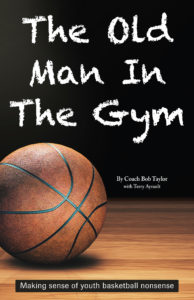9 effective teaching methods for coaches
Productive coaches spend 75 percent of their time teaching the sport to their players, and the other 25 percent of the time coaching. With younger athletes, this gap increases with teaching becoming more important.
 The problem is that many coaches don’t understand how to teach athletics effectively. Plus, some coaches don’t take the time to grasp how athletes learn. Here are nine proven steps to becoming a better teacher and a better coach.
The problem is that many coaches don’t understand how to teach athletics effectively. Plus, some coaches don’t take the time to grasp how athletes learn. Here are nine proven steps to becoming a better teacher and a better coach.
1. Understanding your passion for the sport first.
Before jumping into coaching, coaches first must understand their passion for the game. Having a high level of passion for the sport tremendously influences your energy, creativity and ability to motivate players. Passion is contagious. If one player or one assistant coach comes to practice excited and fired up, that emotion and passion easily is passed to every other member of the team.2. Setting the stage for teaching.
Prior to the first practice, meet with your athletes and explain your role as a coach and teacher of the game. Let them know your purpose is to help improve their athletic skills. Impress upon them that you care about them as people, and that you are concerned about their lives even beyond athletics. Feeling cared about makes a player more coachable — effort and concentration increases. If you care enough about them, they’ll walk through walls for you.
Part of you caring is to work through players’ mistakes. Tell them mistakes are part of the learning process, and the only true mistakes are ones of lack of effort or concentration — both of which easily are corrected.
3. The importance of why.
Don’t assume players know why you are asking them to practice a certain technique or to perform a skill drill. Explain how everything has a positive effect on their ability to play. Be as detailed as possible, because it’s important that they understand why you’re doing certain things.
4. Fundamentals first, then complex.
Know the fundamentals of the sport you teach. This enables you to design practices for your players’ appropriate skill level. It also becomes easier to assist an athlete who cannot perform a certain skill. After grasping the fundamentals, players move on to practice drills focusing on more than one skill at a time. Don’t expect to teach complex skills to players who have not mastered the basics.
5. Use the whole-part method.
 Oftentimes, it’s necessary to teach skills in parts or steps. Once again, in-depth knowledge of fundamentals gives you an advantage. Teaching a skill in part keeps the player motivated, because they are forming a mental checklist for performing the skill correctly. Educators refer to this as “task-analysis.”
Oftentimes, it’s necessary to teach skills in parts or steps. Once again, in-depth knowledge of fundamentals gives you an advantage. Teaching a skill in part keeps the player motivated, because they are forming a mental checklist for performing the skill correctly. Educators refer to this as “task-analysis.”
Moving from one step to the next puts the focus on progress, which allows you to praise the player for grasping a skill and working with the player in areas that need more practice. A good barometer to know if a player is mastering a certain skill is to see if that player is teaching the skill to another teammate.
6. Effective motivation.
Find something positive to say to every athlete at every practice. This satisfies the athlete’s need for attention, recognition and appreciation. Be specific with your praise — specific praise is used to reinforce the why of practice. Always attempt to find more positives than negatives while constantly praising effort.
7. The hoopla of success.
When an athlete or team finally masters a skill or concept, don’t hesitate to momentarily stop practice to recognize the achievement. Praise their effort, and remind your players why mastery of the skill is so critical.
8. Model what you preach.
Most coaches talk to players about certain values and characteristics they hope to see in all team members. Coaches really are the best positive role models for these values. When stressing good sportsmanship, talk about coaching with honor, respect for the game and attitude toward officials. When stressing tenacity, never give up on yourself with your athletes. And, when stressing organization, conduct practices that are structured.
Players look to you for guidance, so don’t say one thing and do the opposite.
9. Encourage crossover athletes.
Coaches who are overzealous sometimes encourage their athletes to play one sport on a year-round basis. This can leads to overuse injuries and burnout. Participating in other sports improves the way the athletes play your sport. The movements and skills required for many sports are similar. Consider the footwork necessary for soccer and basketball are almost identical.
Productive coaching is highly dependent on the coach’s ability to teach their sport. Teaching isn’t just blowing a whistle, barking out orders and heading home after a couple of hours. Being a good teacher takes time, effort, practice, patience and a passion to make a difference in the lives of your players.
3 thoughts on “9 effective teaching methods for coaches”
Leave a Reply
You must be logged in to post a comment.











Great Article!!!
Definetley will use this information!!
Great advice.
Some good tips, especially #9